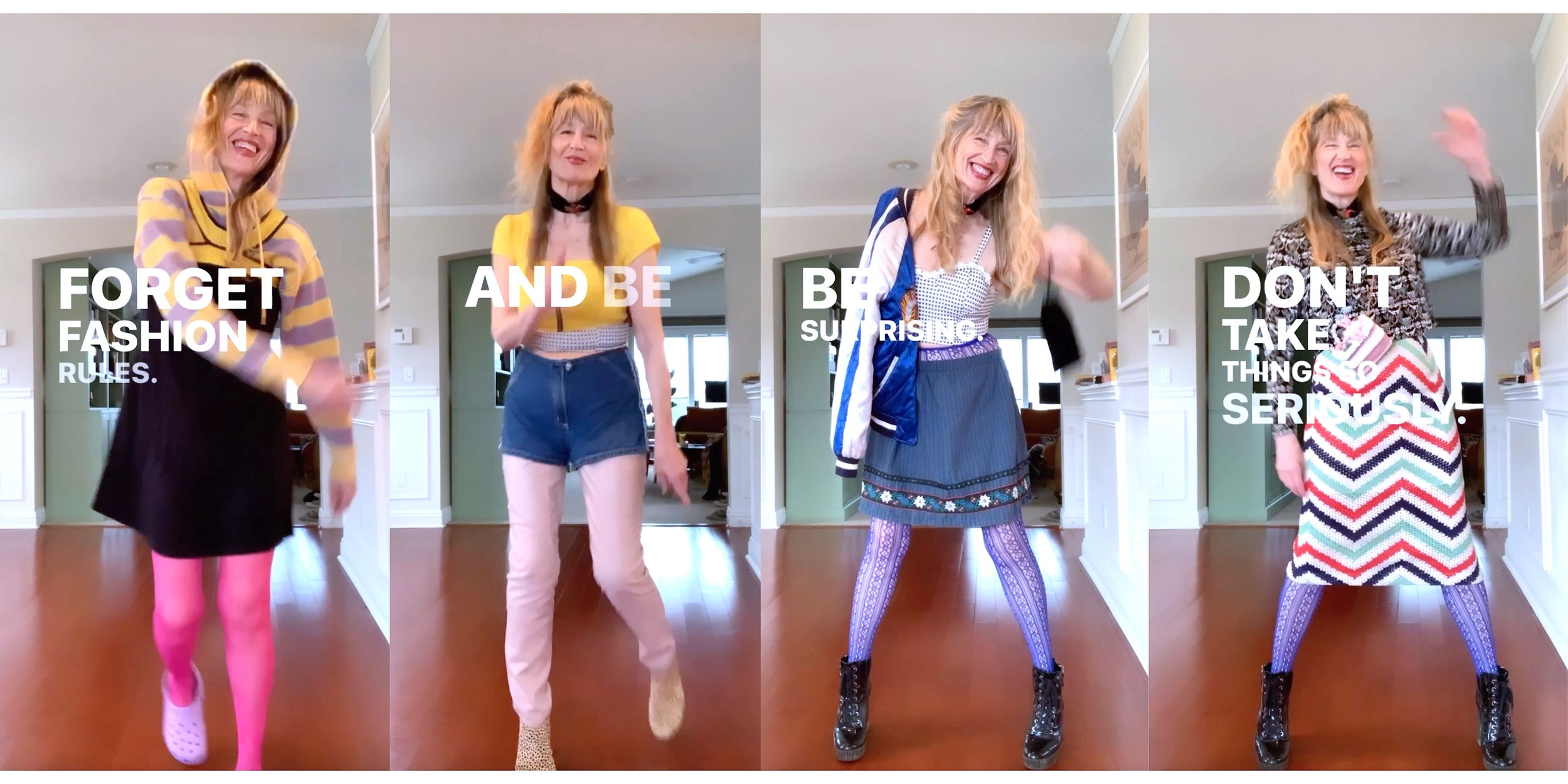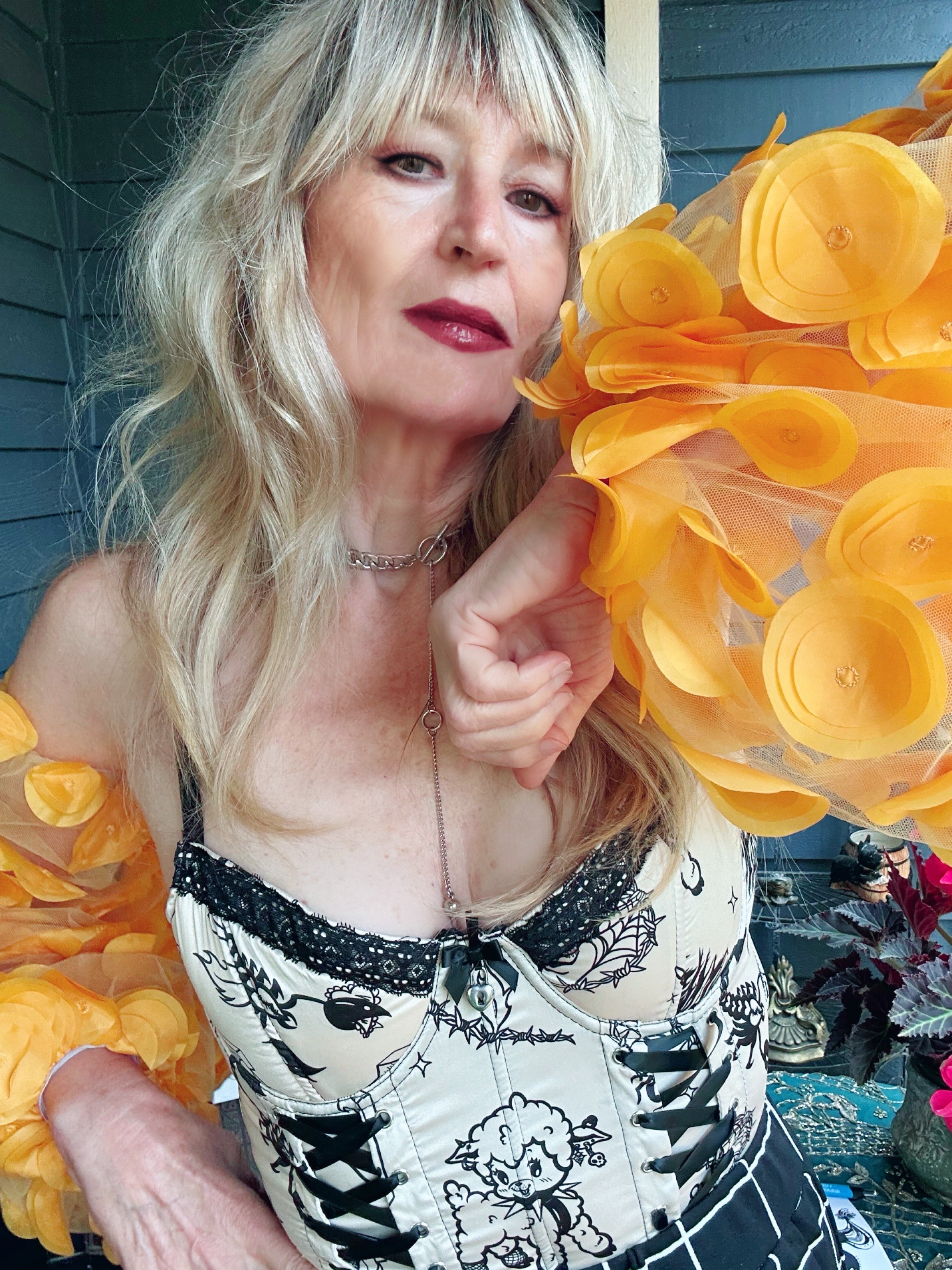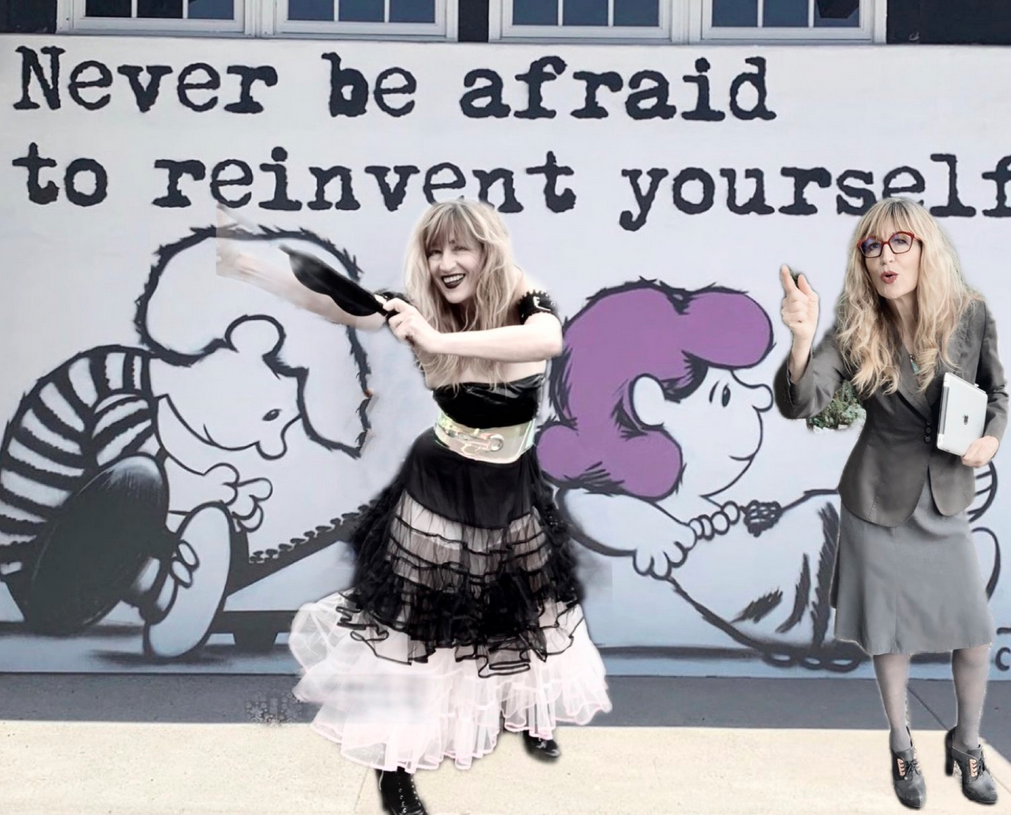“I dress for myself. Not for the image, not for the public, not for the fashion, not for men.” Marlene Dietrich, androgynous rebel, evil diva, femme fatale and fashion goddess loved to rattle the mindset of her time with self assured big statements.
Phenomenally glamorous, the German born, American by choice actress and singer(1901 - 1992) whose career lasted over 50 years, was devoted to the art she created; herself.
Even when she crushed with the same childlike enthusiasm on pretty flowers and butterflies as on beautiful women and men or exquisite fashion, she never doted on anything else but the creation of the woman she adored most, Dietrich.
She was adored by millions, criticized by many, loathed by some and mocked by a few for her obsession with applause. Her competition Judy Garland had some bitchy things to say.
What better person to step into and learn about ourselves in a time of social media’s infatuation with fame and fortune, where everything you do it reaching for likes no matter how earnest your message? Where we dance, sing, take off most of our clothes, create rebellious, funny, artistic or preachy content clips yearning for attention? Where we don’t do a Judy Garland because #womensupportingwomen is our top hashtag.
But what’s behind the facade? Have we really become judgment free little angels?
The Dare
Will you dare to step into Dietrich’s shoes and feel a plethora of bitter beautiful traits? Dare to own your judgments, to discover your inner diva, narcissistic tendencies, your egos’s desire for fame and fortune, your soul’s yearning for independence, your true feelings about sex and sensuality? Will you discover an insecure inner girl who shops the latest trends because of FOMO?
Foreshadowing hashtags #uncompromising & #unapologetic, Marlene offers an explosive range of bold character traits and talents that can change your life if you try on her vibe. When you feel her attitude on your skin or in your imagination, you will shiver with disgust or desire, rejection or envy.
The Rebel
“The only way to succeed is to make people hate you.”
Josef von Sternberg, movie director
One of the many tips we get from social media gurus is to be controversial to attract interaction. Dietrich was that and so much more - starting a hundred years ago.
She was loud and in your face; openly bi sexual, sensually androgynous, unapologetically conquering women and men alike like collecting jewels for her crown. She wore pant suits for women’s liberation and tirelessly entertained the American troops against the Nazis in WWII. In boots in the dirt, in heels on stage or in their beds.
Beauty
Marlene’s face did not fit into the beauty ideals of her time but she set her naturally dramatic features with strong cheek bones and eternally sleepy eyelids into the perfect light, turning them into stardom.
Her dark voice with a range of a mere one-and-a-half-octaves, was not that of a great singer. However, she made up for her technical limitations through inventive phrasing creating intriguing speech songs.
She turned what she was available to her into power.
Over 50 she invented creative solutions, perfect influencer hacks, to freeze her ageless appearance. Her make up artist twisted tiny strands of her hair around hairpins which were then pulled fiercely tight and fixed further back onto her head - sometimes with such determination they would draw blood. Years later it was sold as the Croydon facelift. Dietrich was also one of the first to use surgical tape to pull back the skin on her face, hiding the tape in her hairline or under a wig and also used it when wearing strapless gowns in lieu of a bra. She wore early spanks; a rubber suit under her dresses. Later she ran a fine gold chain under her chin and behind her ears to off sagging skin.
Fashion
Like a being from the future she innovated trailblazing fashion, wearing partially transparent and cut out dresses fit for today. A rebel since childhood being a provocation came natural to her; she also wore masculine three-piece suits to create a look that revolutionized and redefined women's fashion. During the 1930s and along with Katharine Hepburn she helped to make pants acceptable for women to wear. But other than Hepburn, Marlene even exuded her the aura of feminine temptress in her suits and androgynous outfits.
She demanded and was given meticulous attention by famous costume designer Travis Banton with whom she collaborated with endless hand written notes to manifest her vision of excellence.
Her shows with extraordinary costumes, lighting and movement were the frames of her self creation.
The woman who filled her chest of self worth with numerous sex conquests had one deeply passionate relationship; her theatrical wardrobe, the sartorial wonders she created and in turn fashioned the art that was Marlene Dietrich.
Femme Fatale
Like the designer, her husband, her daughter, the movie director Josef von Sternberg who co created her and her fame with the movie The Blue Angel, could resist serving her needs. Many suffered under her seemingly heartless seduction spells.
Otherwise tough Director von Sternberg was hopelessly in thrall to Dietrich. Swedish-American actress Greta Garbo’s affair with Marlene was so painful that Garbo refused to acknowledge her ex lover’s existence for the rest of her life. One could ascertain that Marlene just had to own and then stab Greta Garbo’s heart because it was Greta and not her who was declared the most beautiful woman of her time. Her daughter Maria Riva revealed her narcissism in Marlene, a biographical tale of her mother’s vices and a few virtues.
“You cannot judge Dietrich in a set of normal parameters,” her daughter Maria Riva said in an interview with Diane Sawyer. The bitter sweet, smiling sarcasm of a daughter who served her mother’s career since we was a little girl, let us feel how the need of Marlene’s immaculate self treated the people around her. Just because.
For a narcissist other people’s emotions become marginal. Vanity eliminates insight. When we step away from ourselves into the role we play, we reduce our soul to a voiceless observer.
Sexuality
“In Europe, it doesn’t matter if you’re a man or a woman. We make love with anyone we find attractive,” she once declared.
Educated like famous courtesans of the past, Marlene collected men and women like trophies, conquering a new one every few weeks or month. Nobody could resist her sensual femininity with its mysterious androgynous aura. Her lovers included Errol Flynn, George Bernard Shaw, John F. Kennedy, Joe Kennedy, Dolores del Rio, Mercedes de Acosta, Michael Todd, Michael Wilding, John Wayne, Kirk Douglas, and Frank Sinatra, Edith Piaf, Greta Garbo, and Erich Maria Remarque.
Her daughter let us know that Marlene did not even like sex, just owning whatever crush she was on.
Aging
She was sensual with 70.
Compassion wasn’t part of Marlene’s virtues, not with others nor with herself; when her beauty faded she imprisoned herself in her Parisian apartment for over decade, popping pills and slurping booze escaping into her 2000 books. Some speculate that her death was suicide.
Several reports analyzed that over 40% of over 45 year old often feel lonely and disconnected, which is a serious health risk. Hating our physique often is a part of it.
The revolutionary virtue she can reawaken in us is a reaction to her darkness and bitter demise; to forgive our bodies for aging. To add actions to our compassion we help our bodies to stay fit instead of giving up. Another powerful step it to actively support movements that creates new beauty ideals.
Branding myself as the Ageless Rebel in 2017 was a step against our society’s ageism and my fear of getting old. But in 2023 I caught myself avoiding meetings and social events because I hated my wrinkles. Women who are over 60 and 70 now and didn’t have Botox or facelifts have them, there’s no way around them no matter how healthy we live.
To me, loving my imperfect body and wrinkled skin and them outside no matter what, has never been so demanding - and real. Fighting against ageism and for a new perception of beauty is an important chapter in my life and I’m good at it. Fighting wrinkles though is unsuccessful if we don’t first accept what is. From that solid ground we can turn our self deprecation into a creative journey and possible renewal.
The next time you hate on your mirror image for whatever reason, remember Marlene’s last photo before she died, drugged and alone; her face hidden, covered by a white paste like a death mask.
Then you say “I love you” to your face and might mean it.
Lessons Marlene teaches us
She is an inspiration
to turn our features, loved or not loved, into confident art
co create our own unique style against the demands of our time
keep our bodies in shape against the expectations of what old should look like
be confident to do whatever we need to make us feel like the art we are
discover our deepest fears and hidden yearning, from aging to beauty and sex or the meaning of life
to speak our truth and act on it
dig deeper into our judgments and desires with the goal to become aware and mold ourselves achieving our greatest potential
She is a warning
Marlene had it all but lacked self awareness. She is a warning not to let vanity overcome us. To paraphrase Vivienne Westwood, “The beauty of a woman lies in her awareness.”
Coming back from my journey into Marlene I feel a similar fear of not being on the level of my own standards. How often did I wish I could just drown my insecurities in a couple Tequilas? I don’t because I am committed to healthy longevity. Thanks, Marlene, your pasty white face shocked me back into the bravery to be on the stage of life, wrinkles or not. Better, because of my wrinkles turning like Marlene what I am given into powerful beauty.
Marlene baffles me with her unflinching sexuality, a subject I still am at odds with, and made me huff at the manipulative diva of my past, who I have to forgive to move on to greatness. She supports my need to tell my truth as much as my fearless theatrics and silly crushes on beautiful designs.
Funny enough I was so in character that her perfectionism enwrapped me, asking me to polish my Marlene reel and blog again and again. It took me three weeks instead of 3 hours to create a reel and three days to write a blog.
I am so grateful that I always asked questions and questioned my why.
If oblivion is blissful sunshine then awareness is a passionate storm.
Screen siren, rebel, evil diva, femme fatale and trendsetting fashion goddess Marlene Dietrich, who collected fame, fortune and lovers with naturally frosty calculation is a lightning mirror.
Who said, if it isn’t hard it isn’t worth it?
Dare to step into Dietrich.








































